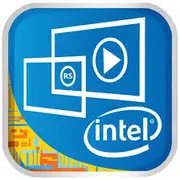Intel Core m3-7Y32

2025년의 Intel Core m3-7Y32: 이 프로세서를 탑재한 노트북을 구입할 가치가 있을까요?
실용적인 분석: 아키텍처, 성능, 배터리 수명 및 사용 시나리오
아키텍처 및 제조 공정: 성능을 희생한 컴팩트함
2017년에 출시된 Intel Core m3-7Y32 프로세서는 Kaby Lake 마이크로아키텍처를 기반으로 하며 14nm 제조 공정으로 제작되었습니다. 이는 하이퍼스레딩을 지원하는 듀얼 코어 칩으로, 4개의 스레드를 통해 병렬 작업이 가능합니다. 기본 클럭 속도는 1.1GHz, 터보 모드에서는 최대 3.0GHz입니다. 내장 그래픽 Intel HD Graphics 615(최대 클럭: 900MHz)는 기본적인 작업을 처리할 수 있지만, 고사양 작업에는 적합하지 않습니다.
아키텍처 특징:
- 에너지 효율성: 울트라 슬림 장치를 위한 최적화.
- 패시브 냉각: 이 CPU가 탑재된 많은 노트북은 팬 없이 작동합니다.
- 제한된 부스트: 터보 모드는 낮은 온도와 짧은 부하(예: 애플리케이션 실행 시)에서만 활성화됩니다.
전력 소비 및 TDP: 왜 4.5W는 적은가?
4.5W의 TDP(열 설계 전력)는 Core m3-7Y32의 핵심 특징입니다. 이는 다음을 가능하게 합니다:
- 두께 13mm 이하의 노트북을 제작할 수 있습니다.
- 8-10시간의 자율성을 위해 컴팩트한 배터리(30–40W·h)를 사용할 수 있습니다.
- 액티브 냉각 없이 작동하여 소음과 장치의 무게를 줄일 수 있습니다.
하지만 낮은 TDP는 성능을 제한합니다: 긴 부하가 있는 경우(예: 비디오 렌더링) 클럭 속도가 기본 1.1GHz로 감소하여 과열을 방지합니다.
성능: 이 프로세서가 실제로 처리할 수 있는 것들은?
Geekbench 6 결과(Single-Core: 872, Multi-Core: 1673)는 이 칩이 현대의 저가형 CPU에 조차 뒤떨어진다는 것을 보여줍니다. 예를 들어 Intel Core i3-1215U(Single-Core: ~1500)와 비교하면 열악한 성능을 보입니다. 그러나 특정 시나리오에서는 여전히 유효합니다:
- 사무 작업:
- Chrome에서 10개 이상의 탭, Word 및 Excel 문서 동시에 작업하기.
- PDF 보기, 렉 없이 Zoom 회의 참석(백그라운드 렌더링을 켜지 않은 경우).
- 멀티미디어:
- 4K 비디오 재생(하드웨어 가속 활용).
- Lightroom에서 사진 편집(필터 적용 시 지연 발생).
- 게임:
- 구형 게임: CS:GO를 낮은 설정(720p, 30-40 FPS)으로 플레이.
- 인디 게임: Stardew Valley, Hollow Knight — 안정적으로 60 FPS.
터보 부스트 모드(최대 3.0GHz)는 OS 로딩, '무거운' 웹사이트 열기와 같은 짧은 작업에 도움이 됩니다. 그러나 20-30초 후에는 클럭 속도가 1.6-2.0GHz로 떨어집니다.
사용 시나리오: 2025년에 Core m3-7Y32는 누구에게 적합할까?
이 프로세서는 중고 시장 및 예산이 한정된 신제품(노트북 가격: $300-450)에 적합한 선택입니다. 이상적인 사용자:
- 학생: 강의 수강, 리포트 작성, 강의 시청.
- 사무 직원: 이메일, 스프레드시트, 프레젠테이션 작업.
- 여행자: 긴 배터리 수명을 제공하는 컴팩트 노트북.
부적합한 경우:
- Photoshop이나 Premiere Pro에서 작업하는 프리랜서.
- 게이머(레트로 게임 애호가 제외).
- CAD 소프트웨어가 필요한 엔지니어.
배터리 수명: 4.5W TDP가 작업 시간에 미치는 영향은?
2025년 Core m3-7Y32 노트북은 중간 사용 시(밝기 50%, Wi-Fi, 사무 작업) 7-10시간의 작동 시간을 제공합니다. 이를 가능하게 하는 요소는 다음과 같습니다:
- Speed Shift 기술: 전력 소비를 줄이기 위한 동적 클럭 관리.
- Windows의 '전력 절약 모드': 백그라운드 프로세스 제한.
- 패시브 냉각: 팬이 없으면 최대 5-7%의 배터리를 절약할 수 있습니다.
조언: 전원 설정에서 터보 부스트를 비활성화하면 조금 느려지지만 1-2시간의 배터리 수명이 늘어납니다.
경쟁 제품과 비교: Core m3-7Y32 대신 어떤 것을 선택할까?
- AMD Athlon Silver 7120U (2023): 2코어/2스레드, TDP 15W. 멀티스레드 작업에서 더 우수(Geeekbench 6 Multi-Core: ~1900)하지만 배터리 수명은 20% 낮습니다.
- Apple M1 (2020): Single-Core: 2300, Multi-Core: 8300. 중고 시장에서 MacBook Air M1은 $500-600 — 1.5배 더 성능이 뛰어납니다.
- Intel Core i3-1115G4 (2020): 2코어/4스레드, TDP 15W. Geekbench 6 Multi-Core: ~2500. 같은 작업에 적합하지만 액티브 냉각이 필요합니다.
결론: Core m3-7Y32는 2023-2024년의 저가형 CPU에도 뒤쳐지지만 가격과 정숙함에서는 이점을 가집니다.
장단점: 언제 구입하고, 언제 포기해야 할까?
강점:
- 초경량화: 무게가 900g인 노트북.
- 조용한 작업: 팬 없음.
- 합리적인 가격: 신제품이 $300부터 시작.
약점:
- 멀티태스킹 성능 저하.
- 최신 Wi-Fi 6E 또는 Thunderbolt 4 표준 미지원.
- 제한된 업그레이드: 메모리와 SSD가 종종 메인보드에 납땜됨.
노트북 선택을 위한 추천 사항
울트라북 또는 컨버터블 카테고리의 장치를 찾으십시오.以下의 사양을 갖춘 제품:
- 화면: 해상도 1920×1080인 IPS 패널. TN 패널은 피하십시오.
- 램: 최소 8GB(3-4년 동안 사용할 계획이라면 16GB가 더 좋음).
- 저장 장치: 256GB SSD(SATA 또는 NVMe).
- 포트: 충전 지원 USB-C, 프로젝터를 위한 HDMI.
2025년 모델 예시:
- Lenovo IdeaPad Flex 3i: 12인치 컨버터블, 8GB RAM, 256GB SSD — $349.
- HP Pavilion x360: 13.3인치 화면, 스타일러스 포함 — $399.
최종 결론: Core m3-7Y32는 누구에게 적합할까?
이 프로세서는 휴대성과 정숙함을 성능보다 더 중시하는 사용자에게 적합한 선택입니다. 2025년에는 다음과 같은 예산형 솔루션으로 고려할 가치가 있습니다:
- 자녀의 첫 번째 노트북 구입.
- 여행 시의 보조 장치.
- 복잡하지 않은 텍스트 및 스프레드시트 작업용.
핵심 이점: $300-400에 기본적인 요구를 충족하는 Windows 11 탑재의 새롭고 가벼운 노트북을 구매할 수 있습니다. 하지만 예산이 더 여유가 있다면 $150-200를 추가하여 12세대 Intel Core i3 또는 AMD Ryzen 3 7300U 탑재 모델을 선택하세요: 더 오랫동안 사용할 수 있으며 멀티태스킹에서도 실망하지 않을 것입니다.
기초적인
CPU 사양
메모리 사양
GPU 사양
여러 가지 잡다한
벤치마크
다른 CPU와 비교
소셜 미디어에서 공유하기
또는 링크로 소개하기
<a href="https://cputronic.com/ko/cpu/intel-core-m3-7y32" target="_blank">Intel Core m3-7Y32</a>